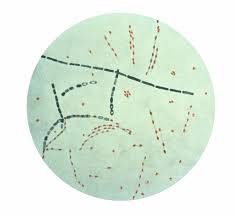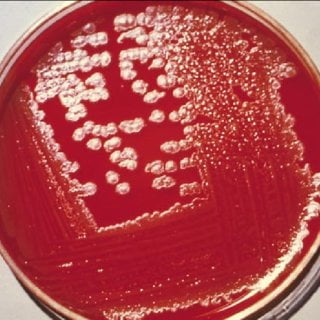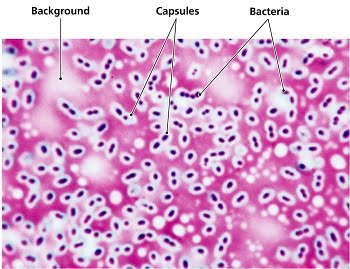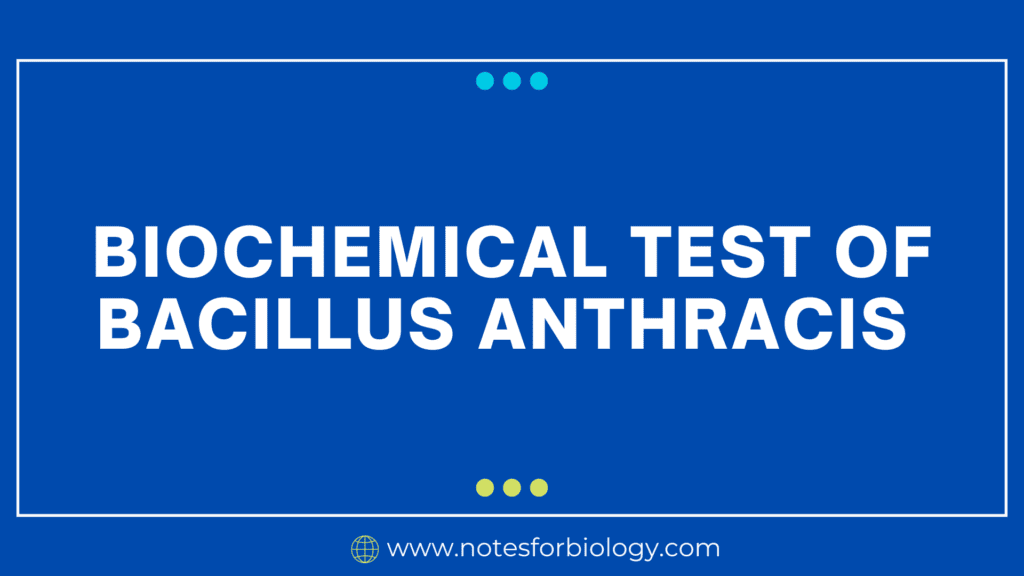Bacillus anthracis, the causative agent of anthrax, is a potent disease with important implications for public health, veterinary medicine, and biodefense. It is critical to precisely identify this bacterium since it has the potential to cause serious sickness in humans and animals, as well as be used as a bioterrorism agent. Biochemical assays are essential for accurately identifying Bacillus anthracis and separating it from closely related species in the Bacillus genus. This comprehensive reference examines a wide range of biochemical tests used in laboratories, explaining their roles in characterizing Bacillus anthracis and assisting in the rapid diagnosis and surveillance of anthrax outbreaks.
Table of Contents
What is Bacillus anthracis?
B. anthracis is a gram-positive rod-shaped bacteria that produces anthrax, a severe infectious illness. It is known for producing hardy spores that can withstand harsh circumstances for extended periods. These spores are the principal mode of transmission, infecting humans and animals via inhalation, ingestion, or contact with broken skin. B. anthracis is uncommon among Bacillus species in that it produces a strong toxin as well as a protective capsule, all of which contribute to virulence. B. anthracis is a major public health and biodefense concern due to its potential use as a bioterrorism agent.

Key tests used for the identification of Bacillus anthracis
Let’s delve into various biochemical tests used for the identification of Bacillus anthracis.
1. Catalase Test
The catalase test is one of the most common biochemical tests used to distinguish bacterial species based on their capacity to produce the enzyme catalase. B. anthracis is catalase-positive, which means it produces the enzyme catalase, which catalyzes the conversion of hydrogen peroxide to water and oxygen. When hydrogen peroxide is introduced to a B. anthracis bacterial colony, it produces bubbles (oxygen), indicating a positive catalase reaction.
2. Oxidase Test
The oxidase test differentiates bacteria based on their capacity to make cytochrome c oxidase, an enzyme involved in the electron transport chain. B. anthracis is usually oxidase-negative, which means it doesn’t make cytochrome C oxidase.
3. Hemolysis of Blood Agar
Blood agar is a differential medium used to detect bacteria’s hemolytic activity on red blood cells. B. anthracis frequently exhibits beta-hemolysis on blood agar, which is the total breakdown of red blood cells around bacterial colonies. This creates a clean zone (beta zone) around the colonies.
4. Lecithinase Test
The lecithinase test detects the synthesis of the enzyme lecithinase by bacteria. B. anthracis generates lecithinase, which hydrolyses the lecithin found in egg yolk agar. This hydrolysis produces a white precipitate around bacterial colonies on egg yolk agar plates, suggesting a positive lecithinase reaction.
5. Penicillin sensitivity
Bacillus anthracis is susceptible to penicillin, a broad-spectrum antibiotic. To detect B. anthracis’ susceptibility to penicillin and other antimicrobial drugs, antibiotic sensitivity testing can be performed using agar diffusion or broth dilution procedures.
6. Gamma Phage Lysis Test
The gamma phage lysis test is a very specific and sensitive method for identifying B. anthracis. Bacteriophage gamma selectively lyses Bacillus anthracis cells, resulting in distinct zones (lysis) on a bacterial lawn. This test is particularly useful for rapidly detecting B. anthracis in clinical and environmental samples.

7. Polymerase Chain Reaction(PCR)
PCR techniques that target specific genes, such as the protective antigen gene (pagA), can be used to quickly and accurately identify Bacillus anthracis DNA. PCR amplification of target genes followed by gel electrophoresis can detect B. anthracis DNA in clinical or environmental samples.
8. Capsule staining
Bacillus anthracis often forms a conspicuous capsule made of poly-D-glutamic acid, a major virulence agent. Capsule staining techniques, such as India ink or Maneval’s stain, can be used to see the capsule around bacterial cells under the microscope.

9. Nitrate Reduction Test
The nitrate reduction test measures bacteria’s capacity to convert nitrate (NO3-) to nitrite (NO2-) or other nitrogenous chemicals. Bacillus anthracis generally reduces nitrate in the medium, creating nitrite or other nitrogenous end products.
10. Sugar Fermentation Tests
Bacillus anthracis is often non-fermentative, which means it does not ferment carbohydrates to produce acid or gas. Sugar fermentation assays, such as the glucose fermentation test, can help distinguish B. anthracis from other fermentative bacteria based on their ability to use specific sugars as carbon sources.
11. Motility Test
Bacillus anthracis is typically motile because of its peritrichous flagella. Motility assays, such as the hanging drop method or the semi-solid agar stab method, can be used to determine bacterial cell motility by observing their ability to move through a liquid medium or agar gel.
12. Growth at various temperatures
Bacillus anthracis grows best at temperatures around 37°C, which is similar to mammalian body temperature. B. anthracis can be distinguished from other bacteria by its growth requirements at various temperatures, including mesophilic (37°C) and thermophilic (45-50°C).
13. Biochemical Profile Analysis
Overall biochemical profile analysis, which includes a combination of the aforementioned biochemical tests, can offer a thorough characterization of Bacillus anthracis and aid in its identification. Automated technologies, such as API (Analytical Profile Index) or VITEK, can be used to quickly identify biological features.
To summarize, proper identification of Bacillus anthracis requires biochemical assays. Healthcare practitioners and microbiologists can use these assays to quickly detect and discriminate B. anthracis from other germs, allowing for timely intervention and containment of anthrax epidemics. Furthermore, the ongoing improvement of advanced molecular techniques improves our ability to detect and characterize B. anthracis strains, thereby supporting global efforts in anthrax surveillance and biodefense.
Frequently Asked Questions (FAQ)
What is Bacillus anthracis?
Bacillus anthracis is a gram-positive rod-shaped bacteria that causes anthrax, a contagious disease that affects both people and animals.
How is Bacillus anthracis recognized in the laboratory?
It is detected via biochemical assays such as catalase, oxidase, hemolysis on blood agar, lecithinase activity, and PCR, among others.
How can Bacillus anthracis be prevented?
Vaccination of at-risk animals and humans, safe animal product handling, and spore exposure control are all part of the prevention strategy.
Related Articles

